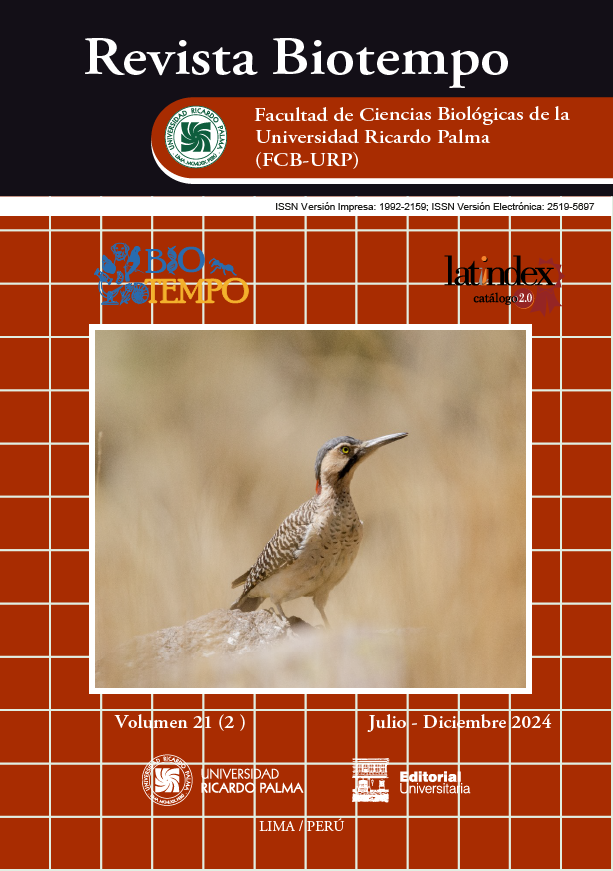The plumages determination in Chilean Flamingo (Phoenicopterus chilensis) (Molina, 1782) and its relashionship with chronological age through resighting ringed individuals recorded in Peru: A first descriptive approach
DOI:
https://doi.org/10.31381/biotempo.v21i2.6516Keywords:
Edad, patrón de plumaje , individuos anillados , Phoenicopteridae, PerúAbstract
In birds the plumage pattern extensions are useful indicators to determine the age. Generally, these patterns change from chicks to adults, and latter, molting annually between breeding and non-breeding plumages. In the case of South American flamingos (Phoenicopteridae), these plumages have not yet been described in detail, especially in wildlife; even less, the relationship with the chronological age and its extension. In this work six types of body contour plumage categories are described: juvenile, immature, subadult and adult. Additionally, the breeding and non-breeding in these last two plumage categories, that were observed in ringed Chilean Flamingos Phoenicopterus chilensis (Molina, 1782), and their relationship with chronological age. In this way, it is needed to better understand the Chilean Flamingo molt chronology, at least the body contour, through which this species goes through. However, there are other factors, which are discussed here, which could play a fundamental role in the acquisition and change between the different plumage types and their relationship with the chronological age.










